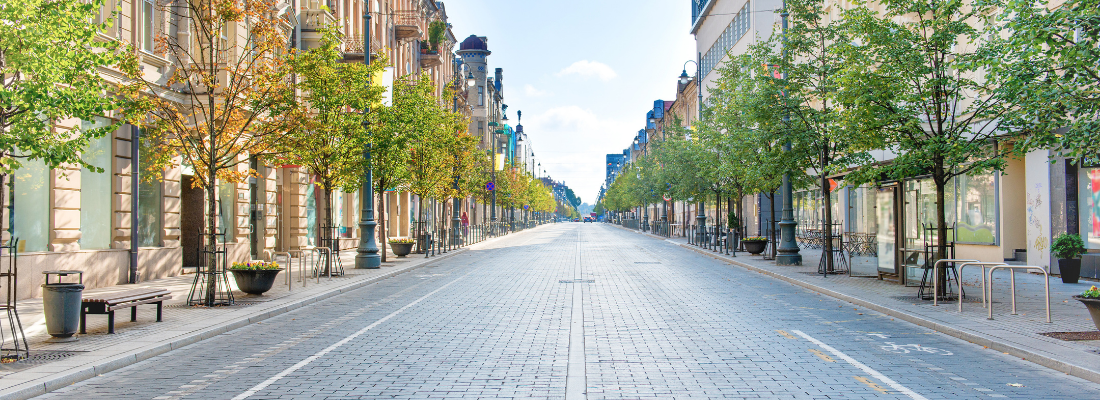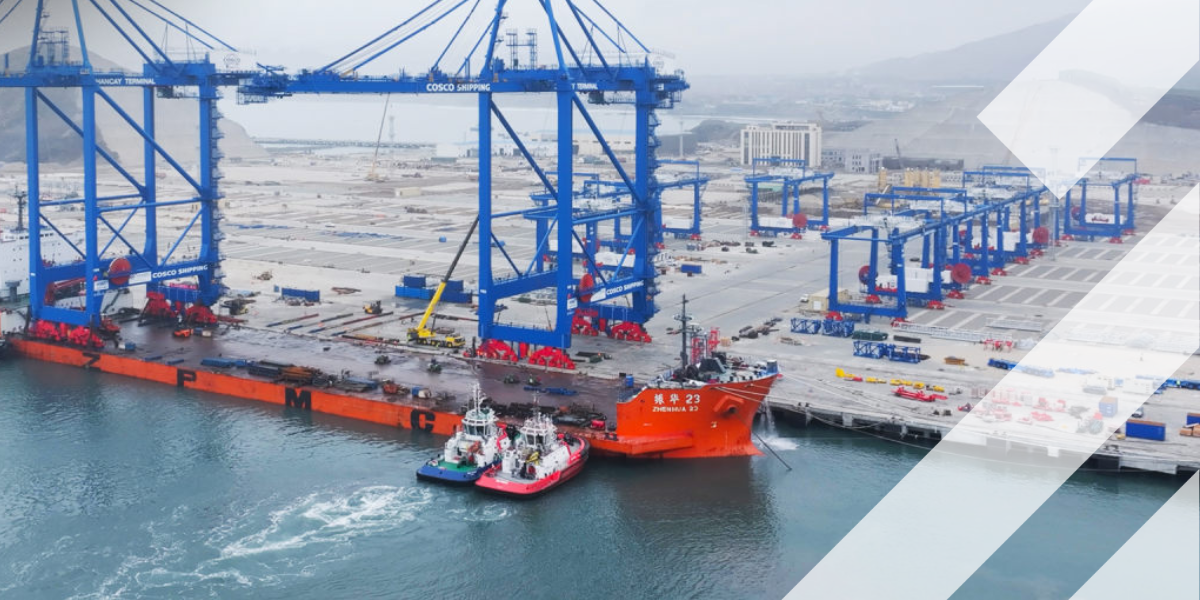How COVID-19 changed global mobility
Intertraffic asks an international panel of experts from the Netherlands, Spain, Italy, Belgium and South Africa how the Covid-19 pandemic has affected their smart mobility plans and public transit ridership in their cities, and what measures they have introduced to deal with the unprecedented disruption.
Over the last 10 months those involved in the smart mobility sector, in both the public and private sectors, have been faced with one crisis after another. The majority of Europe is in the early stages of a third lockdown due to the enormous post-Christmas surge in Covid-19 cases and escalating death toll. However, it remains the job of municipalities to not only ensure their citizens are doing their utmost to stay safe and not spread the virus even further, but also to ensure that (hopefully) come the spring and summer when millions will have been vaccinated that their towns and cities are ready for the restart.
In the meantime those that are classified as key workers and who need to get to work using public transport are entitled to think that they can make those journeys in a safe and sanitized environment.
However, with so much of our lives on hold, and homeworking proving to be highly efficient (in terms of productivity, at least) how is this going to be possible? Life as we knew it has changed – but with innovations in smart mobility far from high on the agenda how are the protagonists preparing to manage the expectations of innovation, integration and implementation?
Very few COVID-19 contagions in public transport
One such solution is Co-Aps, a mobile application that helps reduce the spread of Covid-19 by managing density in public transport and public spaces. A Statista/YouGov survey conducted in May 2020 showed that 32% of over 1000 respondents would use public transport less often after the end of the first lockdown, with cities such as Stockholm and London reporting reductions in public transport usage of between 60 and 75% at various stages of the pandemic (sources: ScienceDirect.com, TfL)
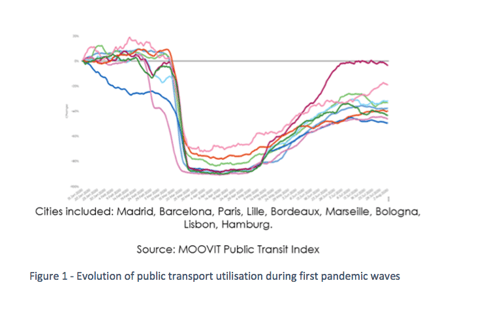
“Even though scientific evidence so far seems to indicate that there have been very few contagions on public transport systems, it is important that our sector continues its efforts to provide the safest possible environment for travellers,” says Prof Josep Llariba-Pey, CEO of Barcelona-based Sparsity Technologies and one of Co-Aps’ developers.
The Co-Aps platform implements mobile technology to gather anonymous user data, open data from cities and data from third party services to provide relevant information about crowds and density to public transport operators and city authorities. The solution means citizens are better protected against the global pandemic by enabling them to avoid crowds.
Co-Aps, funded by eit-Urban Mobility through its COVID-19 call, has been deployed in Barcelona, Sofia, Istanbul and the Greek cities of Athens and Karditsa, and will provide a first set of pilots that will enable the platform to be subsequently rolled out in other cities around the world.
That’s just one example - Intertraffic spoke with representatives of five organisations in Europe and South Africa (where the importance of access to public transport is unrivalled) and posed them one simple question: how has the pandemic affected your smart mobility sector and your public transit ridership figures?
Intermodality in Italy
Lorenzo Modena, CEO, OpenMove, Italy“Mobility patronage, and in particular public transit, has literally collapsed during the Covid-19 outbreak, with an increasing reduction according to the severity of the restrictive measures adopted by the various EU States, from travel limitation to total lockdown.
“This has led to a mismatch between the demand for mobility by travelers and the offer of mobility by the transport service providers. It has highlighted a wide variety of issues that all need to be addressed. For example:
- Public Transport Operators have been forced to operate with limited capacity vehicles;
- Public Transport Operators have not been able to react to the steering of the demand curve due to the phasing of entrance to schools and workplaces, for instance;
- Problems of distribution and sales of transport tickets via traditional media;
- Lack of adequate tools to cope with frequent re-planning of routes and lines;
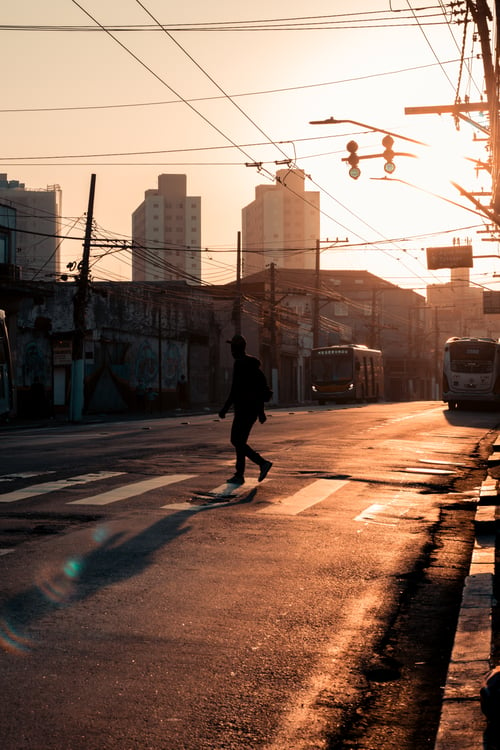
Photo: Thgusstavo Santana/Pexels
“The risk is that users will instinctively return to their cars, due to its intrinsic characteristics of freedom and personal safety."
“The technological gap has led to the inability to communicate to users the evolution of travel itineraries in real time and has absolutely brought home the effects of the absence of effective intermodality between the various modes of transport, often decoupled from each other. This in turn has made it impossible to accommodate and redistribute ridership.
“The risk is that users will instinctively return to their cars, due to its intrinsic characteristics of freedom and personal safety. It would be a pity, after all the efforts made in recent years to promote the modal shift towards sustainable mobility.
“We (OpenMove) firmly believe that the digitalization of transport is an immediate response to the changing needs of travelers, because it is able to bring mobility closer to people. Again, just by way of a few examples, we are referencing:
- Reservation and on-demand solutions able to guarantee a seat for users;
- Vehicle tracking solutions with Estimated Time of Arrival (ETA) calculation, to avoid unnecessary gatherings at stops and at stations;
- Mobile first approach, with a push towards the dematerialization of transport tickets and digital sales;
- Business intelligence tools to make the organization of the mobility scheme more efficient;
- Mobility as a Service (MaaS) integration platform to systematize multiple transport modes and thus distribute the ridership in an optimal way;
Finally, we advocate avoiding expensive investments in hardware, and instead focus on the exploitation of the capabilities of smart, convenient and effective software solutions.”
Micromobility in Belgium
Lina Konstantinopoulou, Secretary General, EuroRAP, Belgium
“The Covid-19 crisis has had an unprecedented impact on transport and the mobility of European citizens and authorities. “Rapid changes in technologies (such as electric-powered vehicles), service providers (such as food delivery) and the sharing economy have led to steep increases in the use of bicycles and a range of other light mobility vehicles in cities across the world. In the United States, for example, the increase in shared micromobility alone more than doubled in a single year, from 35 million trips in 2017 to 84 million trips in 2018. Some cities and regions including Brussels are accelerating existing mobility plans and we are all noticing ad hoc funding programmes and single routes of infrastructure upgrades for cycling and walking.
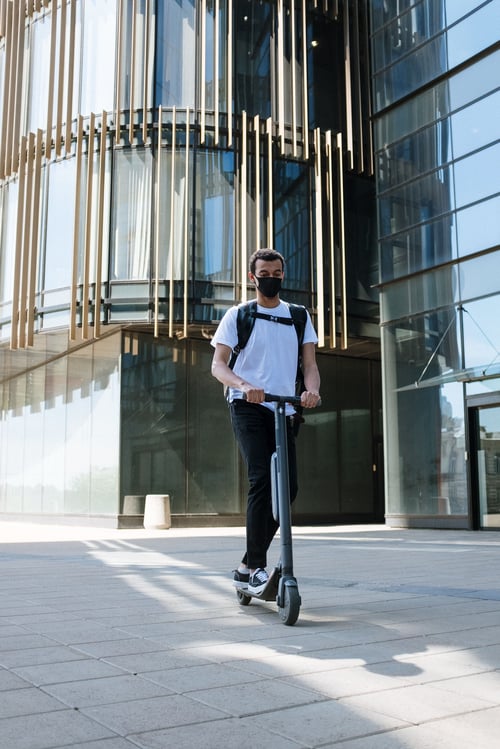
Photo: cottonbro/Pexels
“We are all noticing ad hoc funding programmes and single routes of infrastructure upgrades for cycling and walking."
“We also understand the tremendous pressures on funding now at all levels. We cannot escape that cycling infrastructure has been transformed into a micromobility infrastructure as these lanes are now used not only by bikes, but also by electric bikes and scooters, and many other forms of micromobility vehicles. But when roads and motorways are designed and built, they are not done in one neighbourhood at a time; we don’t build a few km of track, and then leave a 10 km gap in between. In addition to that, road infrastructure needs to be safe for all road users (vehicles, pedestrians, cyclists, motorcyclists) and needs to be designed proactively and reactively in terms of road safety in a common and objective manner.
“Road safety is a critical issue that needs to be addressed to ensure these modes of transport can continue to fulfill their role in supporting new and greener mobility choices. The IRAP CycleRAP (International/Cycle Road Assessment Program) model would power software tools used for pinpointing and mapping where crashes are likely to occur and offer suggestions for treatments to reduce this risk.

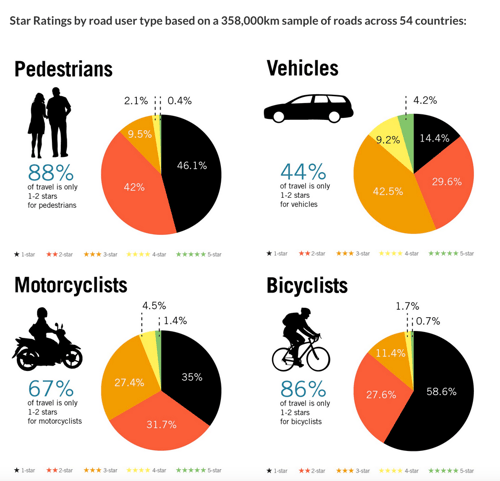
“Monitoring, managing and addressing safety on facilities used by bicyclists and light mobility vehicles is a challenge, even for those with the most advanced cycling networks. Furthermore, crashes involving these vehicles are rarely reported, particularly if a vehicle is not involved. For example, a study of over 35,000 hospital records in the United Kingdom found that over two-thirds of hospitalisations due to bicycling crashes did not involve another vehicle.”
Public transport in South Africa
Paul Vorster, CEO, ITS South Africa
“By mid-January 2021, South Africa had officially recorded more than 1.2 million cases of Covid-19 with over 33,000 deaths and a second wave rapidly escalating these numbers.
“The country’s curfew is currently effective from 21:00– 05:00 and the current ban on the sale of alcohol remains in effect. Non-essential establishments, such as restaurants, must close by 20:00. While several land border posts have been closed to reduce crowding, there are a number of exceptions, including the transport of fuel cargo and goods, medical attention, the return of South African nationals, and the departure of foreign nationals. With social distancing and mask-wearing being the two-pronged clarion call to curb the spread (apart from the long-term vaccination programmes), it is having a critical impact on public transport ridership.

“Social distancing and mask-wearing is having a critical impact on public transport ridership."
“While in the upper-middle and high-income categories, luxury vehicles and SUVs abound, non-motorised transport -- walking and cycling - is still the most important mode of transport for the majority of urban citizens. This is not for health and environmental reasons, but because many do not have access to, or simply cannot afford, motorised transport services.
“The public transport industry comprises of four main modes of transport.
- Firstly, the traditional commuter rail system that has been in severe decline for more than a decade. The service is unreliable and unpredictable at best.
- Secondly, the new Gautrain high-speed rail between Johannesburg, Pretoria and the Oliver Tambo International Airport. This service is aimed at economically active commuters, many of whom would otherwise be using private transport. This is primarily an inter-city and airport service.
- Thirdly, the subsidized and the unsubsidized commuter bus industry, which includes the bus rapid transit (BRT) systems in Johannesburg and Cape Town and a limited-route BRT service in Pretoria. These are inner-city services.
- Fourthly, a very significant minibus-taxi industry. After walking and cycling, these minibuses are the second-most important mode of transport. Using 16-seater vehicles, this service is unregulated, of poor quality and has a poor safety record. Many operate without permits and often vehicles are not roadworthy. Minibus-taxis are more accessible than trains, due to the route and network flexibility.
“In terms of the Disaster Management Act, the adjusted level 3 lockdown regulations inexplicably allow minibus-taxis within cities to operate at 100% capacity, providing masks are worn and a range of sanitation measures are in place.
“Minibus-taxis and long-distance buses travelling 200km or more must operate at 70% capacity and ensure all passengers are wearing face masks and with sanitation measures applied.
“This is the main people-mover for about 70% of public transport users, and hence the Covid-19 mitigation regulations applicable to minibus-taxis are critically important. However, being dominated by the informal sector, implementing and enforcing Covid-19 safety measures is challenging and in practice fairly erratic.
“A more active approach to mitigate Covid-19 is followed by the Gautrain rapid rail service."
“In a July 2020 webinar with the Intelligent Transport Society the Gautrain Management Agency CEO William Dachs reported that in March 2020, the daily passenger numbers started declining rapidly. The monthly number of passengers declined by 28.2% compared to March 2019, while airport service passengers declined by 53.2% and both services recorded 462,553 fewer passenger trips.
“Introducing lockdown level 5 (hard lockdown) meant the complete suspension of the Gautrain service from 27 March 2020 affected all passenger trips. Limited services resumed on 4 May 2020. The average daily Gautrain ridership of between 55,000 and 60,000 declined to between 6,000 and 8,000 in August 2020. A direct correlation can be observed between the infection rate and usage. Passenger numbers are recorded daily and when infection rates increase, ridership drops.
“Managing commuter expectations and confidence in the service, measures include:
- Comprehensive and strict cleaning with sanitization protocols and no commuters allowed into stations without face masks. Compliance is actively monitored on the trains during trips;
- The streamlining of the refund process for unused trips pertaining to weekly or monthly passes;
- Postponement of the annual June fare increase to be reviewed at a later stage; and
- Despite low passenger numbers and trains being restricted to a 40% load factor, there is a need to maintain or increase operational capacity to ensure social distancing;
- Active promotion of the service to instill passenger confidence and confirm to passengers that the Gautrain is safe;
- Running the maximum number of eight-car train sets compared with four-car train sets to ensure physical distancing;
- Additional midibus-taxi services at various stations and review of Gautrain bus routes to increase the number of feeder and distribution routes around stations; and
- Loyalty programmes and additional discounts for youth and the elderly in the form of a new student product and travel card for the elderly.
“The immediate issue is making public transport as safe as possible for those commuters having to travel during the pandemic. The second long-term issue is to regain the confidence of commuters to return to public transport to attain the strategic objective of a modal shift from private transport to public transport and from road to rail.”
Europe Meeting Travel Demand
José F. Papí, Founder & CEO and Friederike Kuhl, Operations Manager, Etelätär Innovation, Amsterdam“The Coronavirus pandemic has demonstrated that established transportation modes, especially in urban environments across Europe, were not adequately equipped to deal with a health crisis of this scale. Mobility demands artificially decreased dramatically during the individual national lockdowns and are followed by long periods of telework. As the way we work, socialise, learn, travel and shop changes, so does the way we move around.
“Traditional modes of transportation usually prove difficult to disinfect and the cleaning process is very inefficient and time-consuming. The vehicles need to be cleaned regularly even if nobody has used them and this process has failed to unveil infection chains, since many service providers lack technologies that sufficiently identify wherever passengers have boarded or left vehicles. This is why for such an extended period of time it was unclear if it was safe to use public transportation in urban settings during the pandemic.
“There is good news, though: most of Europe’s transportation networks were able to provide enough public transportation modes which enabled social distancing within the vehicles and were thus able to meet essential worker’s mobility needs and transport passengers safely.
“Looking towards the future, it is clear that more technology needs to be implemented into modern transportation infrastructure, such as tracking technology, smart and safe identification algorithms or capacity-linked barriers to ensure safe mobility. It is time to seek new alternatives to traditional modes of transportation and implement them, too. The demand for e-bike purchases skyrocketed during the pandemic (the UK’s Guardian newspaper reporting a 230% increase on e-bike sales in 2020 on the previous year’s record total), pointing to a considerable niche in the common public transportation offering: supported, convenient and comfortable, yet light vehicles that are easily accessible, inexpensive and hassle-free.
“Post-Covid mobility will need to change for good."
“One such option is an electric light vehicle (EL-V) that significantly closes the gap between available e-bikes or e-scooters and electric cars. EL-Vs are lighter than cars but benefit from batteries that are much more powerful than those of common e-bikes. Our company, Etalätär has deployed 193 of these vehicles in demonstrations across four European cities in the framework of the EU-funded R&D ELVITEN project. The evidence collected shows that this kind of vehicle has several advantages over the traditional modes of transportation, as they:
- Are used by single users to ensure social distancing regulations are met;
- Are used in open environments to lower viral spread;
- Can be cleaned/disinfected quickly and easily by users;
- Perform very well in urban traffic;
- Do not require additional charging infrastructure;
- Don’t display signs of modal “theft” from public transport;
- Offer comfortable transportation even in winter;
- Represent a profitable business opportunity.
“Post-Covid mobility will need to change for good. The modes of transportation at our disposal today need to develop further and service providers should accept new kinds of mobility alternatives into their portfolio.”
The effects of Covid-19 are going to be a part of our lives for the foreseeable future – make sure you keep up to date with developments in not only the smart mobility sector, but in all industry areas covered by Intertraffic over the coming months. Articles, thought-leadership pieces, interviews will help you keep abreast of what’s going on.
Sources: https://www.mdpi.com/2071-1050/12/18/7367; Muley, D.; Shahin, M..; Dias, C.; Abdullah, M. Role of Transport during Outbreak of Infectious Diseases: Evidence from the Past. Sustainability 2020, 12, 7367.
Related content:
How COVID-19 can or cannot contribute to our environment
COVID-19 pushes mobility innovations.
Watch the recording of the webinar on sustainable mobility
Smart measures to avoid post-Corona congestions
Sustainable mobility: Is COVID-19 speeding it up or slowing it down?
Inside Intertraffic podcast: Restoring faith in public transport
Share your story
Do you have an innovation, research results or an other interesting topic you would like to share with the professionals in the infrastructure, traffic management, safety, smart mobility and parking industry? The Intertraffic website and social media channels are a great platform to showcase your stories!
Please contact our Sr Brand Marketing Manager Carola Jansen-Young.
Are you an Intertraffic exhibitor?
Make sure you add your latest press releases to your Company Profile in the Exhibitor Portal for free exposure.
Get up to speed on the mobility industry - our newsletter straight to your inbox!
